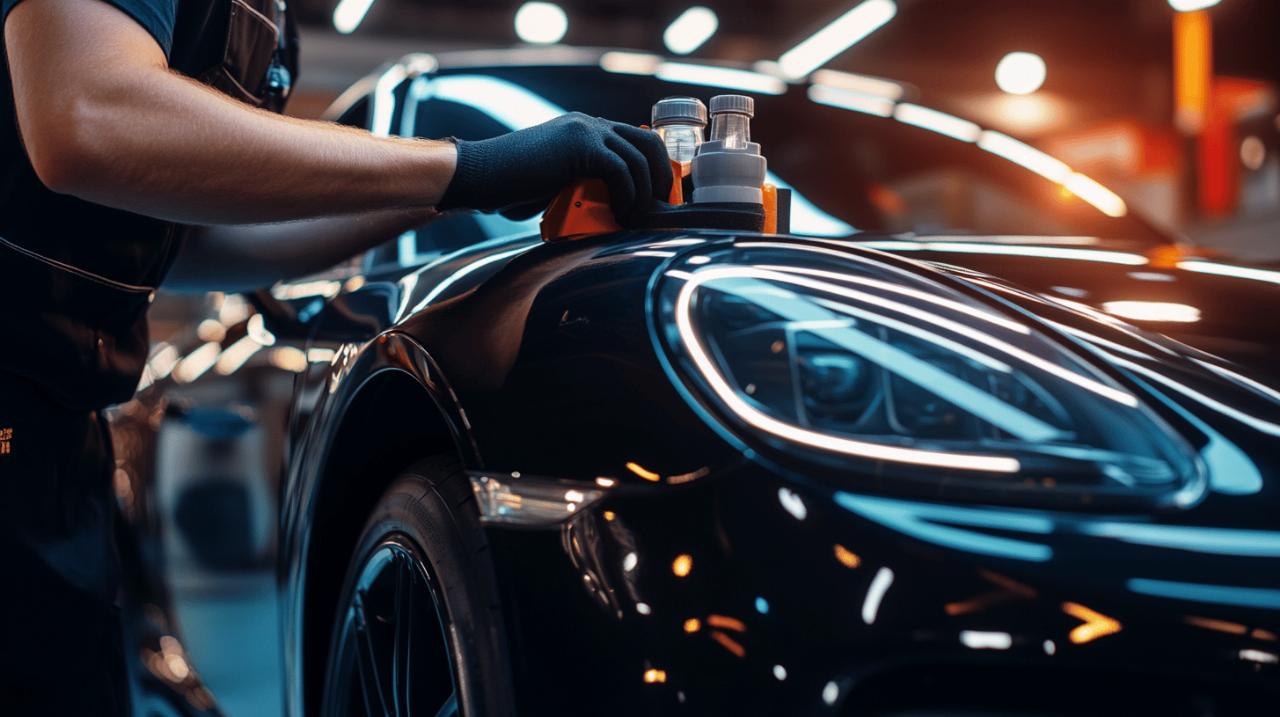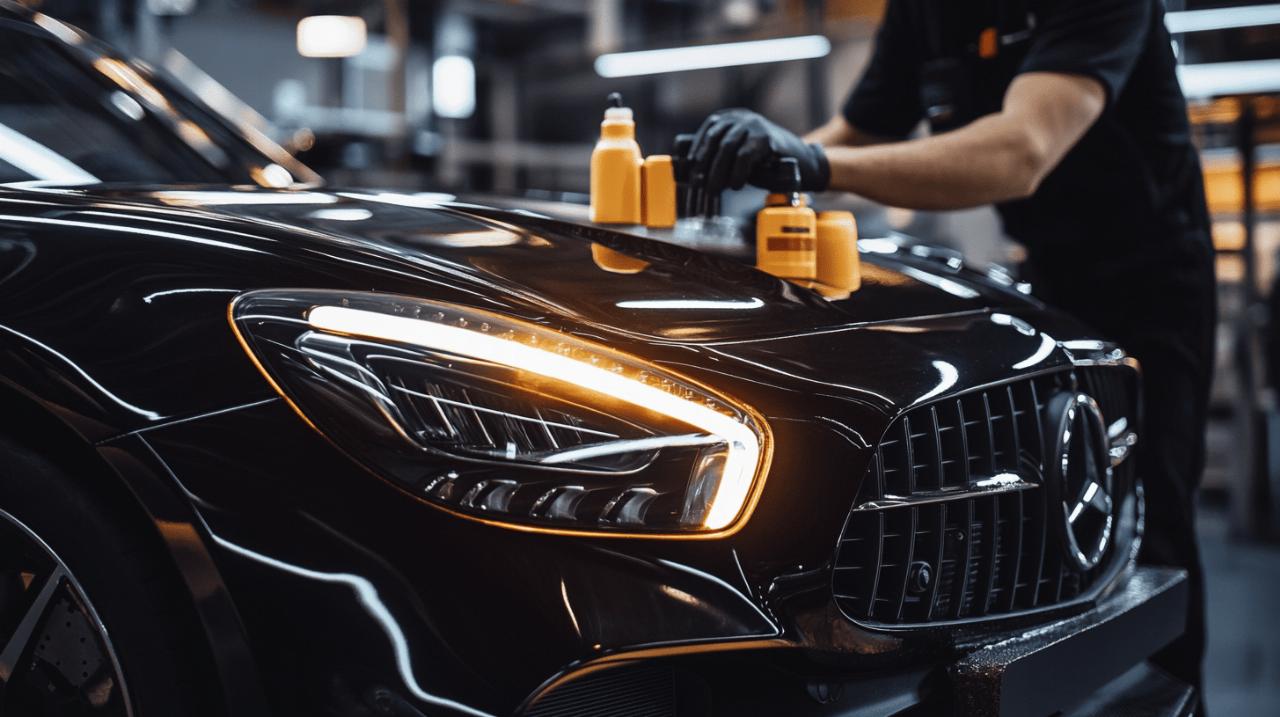
Achieving a showroom-worthy finish on your vehicle isn't just about aesthetics—it's about preserving your car's paint and protecting your investment. Professional car polishing techniques can transform a dull exterior into a mirror-like finish that lasts for months rather than days. With the right approach, tools, and products, you can elevate your vehicle's appearance to new heights and maintain that head-turning shine much longer than with standard washing alone.
Preparing your vehicle for professional polishing
Before diving into the polishing process, proper preparation is crucial for achieving optimal results. This foundational step ensures that the polishing compounds can work effectively without causing damage to your vehicle's paintwork. Kammann Automobile experts emphasize that skipping or rushing through preparation is a common mistake that can lead to subpar results or even paint damage.
Proper washing and decontamination steps
The first step in any professional polishing routine is a thorough wash to remove surface contaminants. Start with a pH-neutral car shampoo that won't strip existing protection. Following the wash, decontamination becomes essential—this involves removing bonded contaminants that regular washing cannot eliminate. A clay bar treatment is indispensable at this stage, as it removes embedded particles that would otherwise interfere with the polishing process or potentially cause scratches when buffing begins.
After claying, inspect the paint surface under different lighting conditions to identify remaining imperfections. Statistics show that approximately 90% of visible scratches on vehicles result from improper washing and polishing techniques, making this preparation phase critical for achieving that long-lasting shine. Complete the preparation by thoroughly drying the vehicle, paying special attention to crevices and panel gaps where water can hide.
Essential Tools and Products for Preparation
Gathering the right arsenal of tools before beginning ensures a smooth preparation process. High-quality microfiber towels are non-negotiable for safe washing and drying without introducing new scratches. A premium clay bar kit with appropriate lubricant will effectively remove bonded contaminants without marring the paint surface. For thorough cleaning, consider specialized products that address different types of contamination such as industrial fallout removers for iron particles and tar removers for road grime.
An often overlooked but vital tool is proper lighting. LED inspection lights help identify swirls, scratches, and other imperfections that might be invisible under normal lighting. This thorough preparation stage sets the foundation for successful polishing and ultimately contributes to the longevity of your finish. Professional detailers with ceramic coating experience recommend investing in high-quality preparation products rather than cutting corners, as the end result directly reflects the care taken during this initial phase.
Advanced polishing methods for stunning results
 Once your vehicle is properly prepared, the actual polishing process begins. This stage is where the transformation really happens, with damaged, dull paint becoming glossy and reflective. The techniques used at this stage determine not only the immediate visual impact but also how long the results will last. Mastering these methods takes practice but delivers remarkable results that justify the effort.
Once your vehicle is properly prepared, the actual polishing process begins. This stage is where the transformation really happens, with damaged, dull paint becoming glossy and reflective. The techniques used at this stage determine not only the immediate visual impact but also how long the results will last. Mastering these methods takes practice but delivers remarkable results that justify the effort.
Machine polishing techniques and pad selection
Machine polishing represents the most efficient and effective approach for achieving professional results. Dual-action polishers are generally recommended for enthusiasts and professionals alike due to their safety features that prevent paint damage. When selecting polishing compounds, consider the severity of imperfections—products range from aggressive cutting compounds for significant defects to fine finishing polishes for enhancing gloss and clarity.
Pad selection is equally important and should complement your chosen polish. Cutting pads paired with abrasive compounds address deeper scratches, while finishing pads with finer polishes bring out maximum gloss. Technique matters tremendously—maintain moderate machine speeds, apply light to medium pressure, and work in overlapping passes to ensure even correction. Always test your combination of machine, pad, and polish on a small, inconspicuous area before proceeding to the entire vehicle. This methodical approach minimizes risks while maximizing paint correction results.
Hand polishing secrets for difficult areas
While machine polishing handles most surfaces efficiently, certain areas require hand polishing techniques. These include tight spaces around badges, door handles, and complex body lines where machines cannot safely reach. For these challenging sections, apply polish to a foam applicator and work in small circular motions with moderate pressure. The key difference in hand polishing is persistence—without machine assistance, more time and effort are required to achieve comparable results.
After completing both machine and hand polishing, a thorough wipe-down with a specialized panel wipe or isopropyl alcohol solution removes any polish residues that might interfere with subsequent protection products. This step ensures that your newly polished surface is perfectly clean and ready for wax, sealant, or ceramic coating application. These final protective layers lock in your hard work, shielding the perfected paint from environmental contaminants and UV damage that would otherwise quickly diminish your results. With proper application of these advanced techniques, your vehicle will maintain its showroom shine for months rather than weeks, truly showcasing the value of professional polishing methods.



